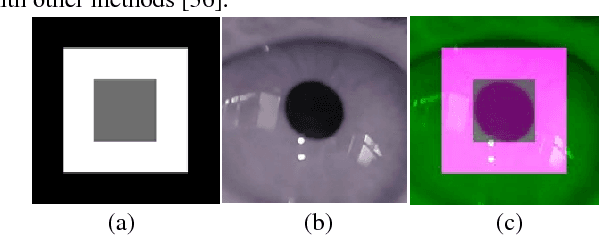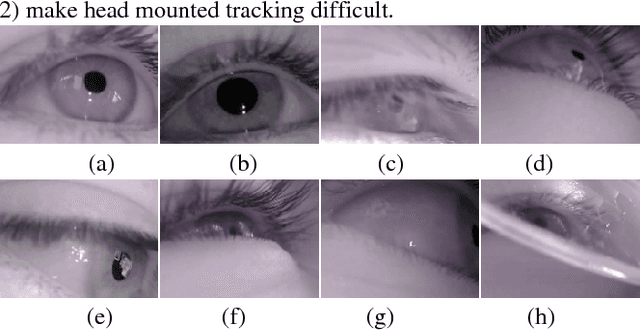Ian G. Harris
LogLLaMA: Transformer-based log anomaly detection with LLaMA
Mar 19, 2025



Abstract:Log anomaly detection refers to the task that distinguishes the anomalous log messages from normal log messages. Transformer-based large language models (LLMs) are becoming popular for log anomaly detection because of their superb ability to understand complex and long language patterns. In this paper, we propose LogLLaMA, a novel framework that leverages LLaMA2. LogLLaMA is first finetuned on normal log messages from three large-scale datasets to learn their patterns. After finetuning, the model is capable of generating successive log messages given previous log messages. Our generative model is further trained to identify anomalous log messages using reinforcement learning (RL). The experimental results show that LogLLaMA outperforms the state-of-the-art approaches for anomaly detection on BGL, Thunderbird, and HDFS datasets.
ShareLoRA: Parameter Efficient and Robust Large Language Model Fine-tuning via Shared Low-Rank Adaptation
Jun 16, 2024Abstract:This study introduces an approach to optimize Parameter Efficient Fine Tuning (PEFT) for Pretrained Language Models (PLMs) by implementing a Shared Low Rank Adaptation (ShareLoRA). By strategically deploying ShareLoRA across different layers and adapting it for the Query, Key, and Value components of self-attention layers, we achieve a substantial reduction in the number of training parameters and memory usage. Importantly, ShareLoRA not only maintains model performance but also exhibits robustness in both classification and generation tasks across a variety of models, including RoBERTa, GPT-2, LLaMA and LLaMA2. It demonstrates superior transfer learning capabilities compared to standard LoRA applications and mitigates overfitting by sharing weights across layers. Our findings affirm that ShareLoRA effectively boosts parameter efficiency while ensuring scalable and high-quality performance across different language model architectures.
LinguaLinked: A Distributed Large Language Model Inference System for Mobile Devices
Dec 01, 2023



Abstract:Deploying Large Language Models (LLMs) locally on mobile devices presents a significant challenge due to their extensive memory requirements. In this paper, we introduce LinguaLinked, a system for decentralized, distributed LLM inference on mobile devices. LinguaLinked enables collaborative execution of the inference task across multiple trusted devices. LinguaLinked ensures data privacy by processing information locally. LinguaLinked uses three key strategies. First, an optimized model assignment technique segments LLMs and uses linear optimization to align segments with each device's capabilities. Second, an optimized data transmission mechanism ensures efficient and structured data flow between model segments while also maintaining the integrity of the original model structure. Finally, LinguaLinked incorporates a runtime load balancer that actively monitors and redistributes tasks among mobile devices to prevent bottlenecks, enhancing the system's overall efficiency and responsiveness. We demonstrate that LinguaLinked facilitates efficient LLM inference while maintaining consistent throughput and minimal latency through extensive testing across various mobile devices, from high-end to low-end Android devices. In our evaluations, compared to the baseline, LinguaLinked achieves an inference performance acceleration of $1.11\times$ to $1.61\times$ in single-threaded settings, $1.73\times$ to $2.65\times$ with multi-threading. Additionally, runtime load balancing yields an overall inference acceleration of $1.29\times$ to $1.32\times$.
Robust Safety Classifier for Large Language Models: Adversarial Prompt Shield
Oct 31, 2023



Abstract:Large Language Models' safety remains a critical concern due to their vulnerability to adversarial attacks, which can prompt these systems to produce harmful responses. In the heart of these systems lies a safety classifier, a computational model trained to discern and mitigate potentially harmful, offensive, or unethical outputs. However, contemporary safety classifiers, despite their potential, often fail when exposed to inputs infused with adversarial noise. In response, our study introduces the Adversarial Prompt Shield (APS), a lightweight model that excels in detection accuracy and demonstrates resilience against adversarial prompts. Additionally, we propose novel strategies for autonomously generating adversarial training datasets, named Bot Adversarial Noisy Dialogue (BAND) datasets. These datasets are designed to fortify the safety classifier's robustness, and we investigate the consequences of incorporating adversarial examples into the training process. Through evaluations involving Large Language Models, we demonstrate that our classifier has the potential to decrease the attack success rate resulting from adversarial attacks by up to 60%. This advancement paves the way for the next generation of more reliable and resilient conversational agents.
GAP-Gen: Guided Automatic Python Code Generation
Jan 19, 2022



Abstract:Automatic code generation from natural language descriptions can be highly beneficial during the process of software development. In this work, we propose GAP-Gen, an automatic code generation method guided by Python syntactic constraints and semantic constraints. We first introduce Python syntactic constraints in the form of Syntax-Flow, which is a simplified version of Abstract Syntax Tree (AST) reducing the size and high complexity of Abstract Syntax Tree but maintaining the crucial syn-tactic information of Python code. In addition to Syntax-Flow, we introduce Variable-Flow which abstracts variable and function names consistently throughout the code. In our work, rather than pre-training, we focus on modifying the fine-tuning process which reduces computational requirements but retains high generation performance on automatic Python code generation task. GAP-Gen fine-tunes the transformer-based language models T5 and CodeT5 using the Code-to-Docstring datasets CodeSearchNet, CodeSearchNet AdvTest, and Code-Docstring-Corpus from EdinburghNLP. Our experiments show that GAP-Gen achieves better results on automatic Python code generation task than previous works
Head Mounted Pupil Tracking Using Convolutional Neural Network
Jul 17, 2018



Abstract:Pupil tracking is an important branch of object tracking which require high precision. We investigate head mounted pupil tracking which is often more convenient and precise than remote pupil tracking, but also more challenging. When pupil tracking suffers from noise like bad illumination, detection precision dramatically decreases. Due to the appearance of head mounted recording device and public benchmark image datasets, head mounted tracking algorithms have become easier to design and evaluate. In this paper, we propose a robust head mounted pupil detection algorithm which uses a Convolutional Neural Network (CNN) to combine different features of pupil. Here we consider three features of pupil. Firstly, we use three pupil feature-based algorithms to find pupil center independently. Secondly, we use a CNN to evaluate the quality of each result. Finally, we select the best result as output. The experimental results show that our proposed algorithm performs better than the present state-of-art.
 Add to Chrome
Add to Chrome Add to Firefox
Add to Firefox Add to Edge
Add to Edge